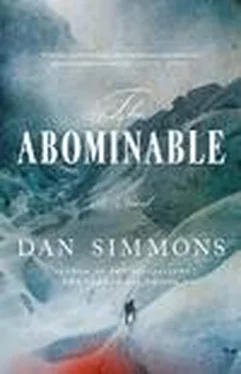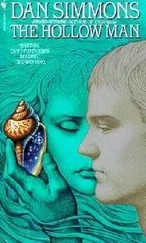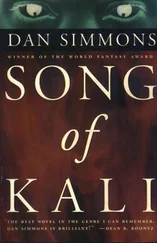This is 1925: stylish women have a certain look. To be stylish in 1925 means the woman has to be flat-chested as a boy (I’d heard that there are breast bands and other such underwear sold to produce that effect for those ladies not lucky enough to come by flat-chestedness naturally), but this woman entering the room with Pasang by her side definitely has breasts, although she isn’t flaunting them. Actually, her shirt—and it really is more of a shirt than a lady’s blouse—is of a fine linen but otherwise cut much like a working man’s field shirt. It does not hide her curves.
A fashionable woman in 1925 will have her hair cut short, parts of it curled—the floozies in Boston and New York and London go in especially for spit curls—or, better yet, especially for the smart set, bobbed short. This woman with Pasang has long hair, dropping in rich natural curls below her shoulders.
The fashionable hair color for ladies in 1925 is blond bordering on platinum; this woman has hair so dark as to be both blue and black at the same time. The highlights on the ebony curls flicker and dance with the movement of sunlight on her long hair. The sophisticated sort of society women I’d met through Harvard and the whores I’d met in Boston speakeasies had mostly plucked their real eyebrows and then penciled in the skinny, high-arched fake brows that Jean Harlow would soon make so popular worldwide. This woman striding toward our table has rich black eyebrows that arch only slightly but which seem infinitely expressive.
And her eyes…
When she is at the base of the stairway twenty-five feet away, I think that her eyes are blue. At twenty feet, I realize that I’m wrong—the color of her eyes is ultramarine.
Ultramarine is a strange and rare color: beyond sea blue, even beyond the deeper blue artists call marine blue. When my mother included ultramarine in her paintings, which was rarely, she would use her thumb to crush small balls of pure lapis lazuli into powder, wet the powder with drops of water from a glass or with her own saliva, and then, using strong, sure jabs of her palette knife, mix tiny amounts of that overpoweringly strong tone— ultramarine —into the seascape or skyscape on which she was working. In the slightest excess, it’s disturbing, unbalancing. In just the right amount, it’s the most beautiful color in existence.
This woman’s eyes have just the right shade of ultramarine to complete and complement the rest of her beauty. Her eyes are perfect. She is perfect.
She strides across the room with Pasang to her right and only half a step behind her, and both stop behind the empty chair at the head of our table, the Deacon on her right and J.C. and me gawking from her left. The Deacon, J.C., and I stand to greet her, although I admit that my standing is more of a springing upward. Jean-Claude is smiling. The Deacon is not. Pasang is carrying a pile of books and what appear to be rolled maps, but my eyes have no time to linger on Pasang or my friends.
Besides the beautiful linen shirt-blouse, this woman is wearing a broad belt and a riding skirt—breeches, really, but looking like a skirt—of what appears to be the softest, richest suede in the world. Suede well and evenly bleached to even subtler hue and greater softness by high Darjeeling sunlight. It’s almost as if she’s here in tea plantation work clothes (if work clothes were ever perfectly tailored). Her equestrian boots are such as those a lady would wear while riding in tall grass or snake country and look to be made of a leather so soft that I think it can only have been formed from the hides of newborn calves.
She stands at the head of the table, and Pasang nods to each of us in turn. “Mr. Richard Davis Deacon, Monsieur Jean-Claude Clairoux, Mr. Jacob Perry, it is my pleasure to introduce to you Lady Katherine Christina Regina Bromley-Montfort.”
Lady Bromley-Montfort nods to each of us as we are introduced, but she does not offer to shake hands. She is wearing thin leather gloves that match her boots.
“Mr. Perry and Monsieur Clairoux, a pleasure to meet you at long last,” she says and turns to the Deacon. “And you, Dickie, my cousins Charlie and Percy used to write to me about you all the time when we were all young. You were quite the wild child.”
“We were expecting Lord Bromley-Montfort,” the Deacon says coolly. “Is he nearby? We have expedition business to discuss.”
“Lord Montfort is at our plantation only a thirty-minute ride up into the hills,” says Lady Bromley-Montfort. “But I’m afraid he will not be available to you.”
“Why is that?” demands the Deacon.
“He is in a crypt at the tea plantation,” says the woman, her amazing eyes remaining clear and fixed on the Deacon’s face. She seems almost amused. “Lord Montfort and I were married in London in 1919, before we came back to India, to the plantation where I had been raised and which I had been running. I became Lady Bromley-Montfort, and eight months later Lord Montfort passed away from dengue fever. The climate in India never really agreed with him.”
“But I’ve been sending letters to Lord Bromley-Montfort…,” sputters the Deacon. He removes his pipe from his jacket pocket and clenches it between his teeth but makes no move to fill it or light it. “Lady Bromley mentioned a Cousin Reggie, so I naturally assumed…”
She smiles, and my legs go weaker. “Katherine Christina Regina Bromley-Montfort,” she says softly. “‘Reggie’ to my friends. Monsieur Clairoux, Mr. Perry, I sincerely hope that you will call me Reggie.”
“Jean-Claude, Reggie,” says my friend and bows low to her, taking her hand and kissing it even with the glove on.
“Jake,” I manage.
Reggie takes the seat at the head of the table while the tall, dignified form of Pasang stands behind her like a bodyguard. He hands her a map and she unscrolls it on our table, unceremoniously moving aside used plates and cups to make room. Jean-Claude and I look at each other and then also sit. The Deacon clamps down so hard on the stem of his pipe that it makes an audible clack, but eventually he sits.
Reggie is already speaking. “Your proposed route is the standard one, and I agree with most of it. The day after tomorrow we can take some of our plantation trucks to Sixth Mile Stone, do the final loading of packs and pack animals there, and proceed on foot with the Sherpas past the Tista Bridge and beyond to Kampong, where some of our other Sherpas will be waiting for us with more mules…”
“Us?” says the Deacon. “We?”
She looks up at him with a smile. “Of course, Dickie. Since my aunt agreed to fund your search for Cousin Percy’s body, it’s always been understood that I would accompany you. It’s an absolute condition for any further funding of the expedition.”
The Deacon must realize that he is going to bite through the stem of his favorite pipe, for he removes it with a violent motion that almost catches Reggie in the head. Rather than apologize, he says, “You on the expedition to Everest? A woman? Even to the Base Camp? Even into Tibet? Absurd. Ridiculous. Out of the question.”
“It was an absolute condition of the funding for this—my—expedition to recover Cousin Percival’s remains,” Reggie says, her smile still in place.
“We’ll go on without you,” says the Deacon. His face is very red.
“You’ll do so without a shilling more from the Bromley estate,” says Reggie.
“Very well, then, we’ll forge ahead on the funds we have,” barks the Deacon.
What funds? is my thought. Even the tickets from Liverpool to Calcutta have been paid for by Lady Bromley…evidently out of the money earned by Reggie’s tea plantation.
Читать дальше












